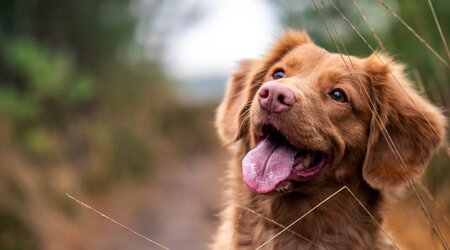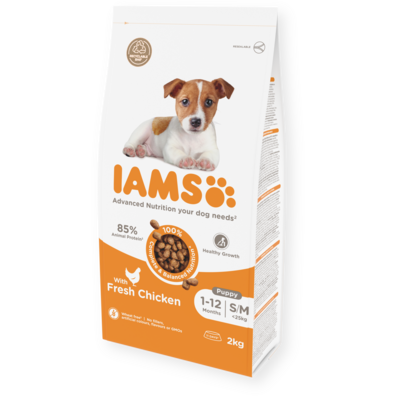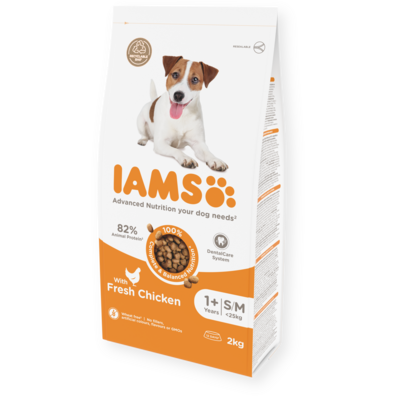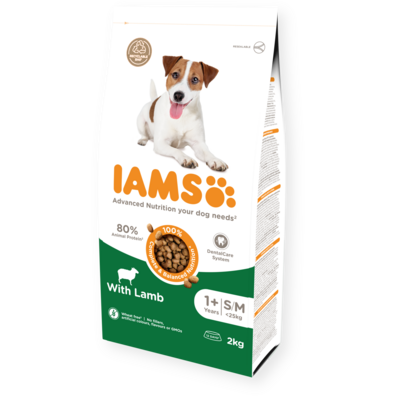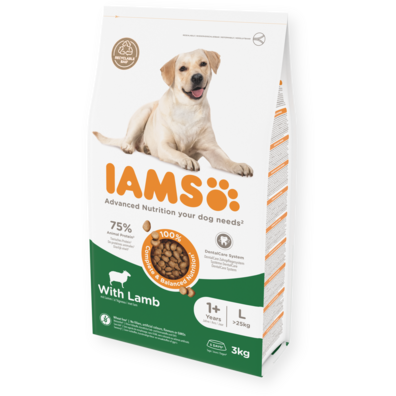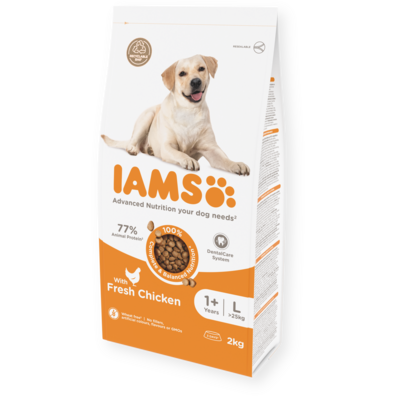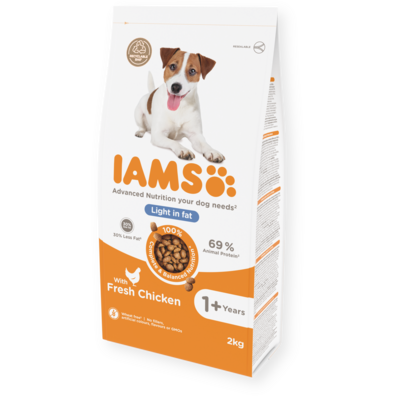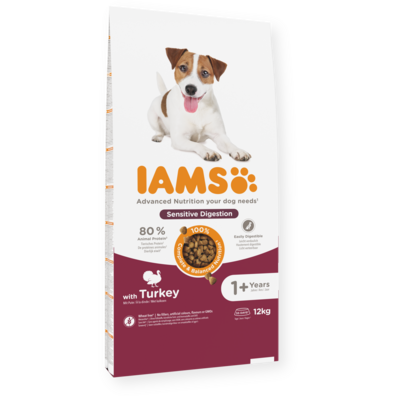How much food does my dog need?
Feeding your dog the right amount of food is key to their overall health and wellbeing — but how do you know what’s right? From puppy to senior, every dog is different and one-size-fits-all feeding guides often fall short. In this guide, we’ll walk you through how to determine the right portion sizes based on your dog’s age, size, and activity level, what to look for in high-quality dog food and how to avoid common feeding mistakes.

Determining the right amount of dog food
How much food your dog needs depends on several factors like age, weight, breed, activity level and overall health. A playful young Labrador, for instance, will require more calories than a senior lapdog. Feeding guidelines on packaging can be a helpful starting point, but they don’t always reflect your dog’s individual needs. Keep an eye on your dog’s body condition and energy levels and adjust portions accordingly.
If you’re unsure or notice changes in weight, appetite or behaviour, consult your veterinarian. They can help tailor a feeding plan to support your dog’s long-term health and well-being.
Why tailored nutrition by breed size matters
Every dog is unique, and their nutritional needs go beyond age and activity level. One of the biggest factors to consider when choosing the right food is breed size. A Jack Russell Terrier has very different dietary requirements compared to a Labrador Retriever or a Great Dane – and feeding them accordingly can make a big difference to their overall health and wellbeing.
- Small and Medium Breeds: Smaller dogs often have fast metabolisms and smaller stomachs, meaning they burn energy quickly but can only eat small portions at a time. Their food needs to be nutrient-dense with kibble designed for their smaller mouths. Medium-sized dogs are wonderfully versatile but still benefit from food designed to support their balanced lifestyle. They need a diet that offers the right mix of energy, lean protein, and nutrients to help maintain strong muscles and a healthy weight.
- Large Breeds: Big dogs grow more slowly but require controlled calorie levels and the right balance of calcium and phosphorus to support healthy bone and joint development. Especially during growth, they can benefit from food specifically for large breeds. Their food should also contain nutrients to help maintain joint health as they age.
IAMS tailors its recipes to meet the specific needs of different breed sizes. From kibble shape and size to carefully balanced levels of protein, fat, vitamins, and minerals, every formula is crafted to support optimal health, whether your dog is small or large. With high-quality animal proteins and essential nutrients, IAMS helps keep dogs of all sizes happy, healthy, and thriving.
What to look for in high-quality dog food?
Not all dog food is created equal. To ensure your dog gets the nutrition they need, look for a product where a named animal protein (like chicken, lamb or salmon) is listed first. This indicates a high-quality source of protein —essential for muscle maintenance and overall health. Equally important are healthy fats, such as omega-3 and omega-6 fatty acids, which support skin, coat and brain health. Added vitamins and minerals, like vitamin E and zinc, help strengthen the immune system.
Avoid dog food that contains artificial colours, flavours, or uses generic group declarations in its ingredient list. When reading the ingredients list, remember items are listed in order of weight. The first few ingredients are the most impactful. High-quality dog food keeps it simple, transparent and focused on nutrition not bulk.
Read more about the role of protein, fat and fibre in your dog’s diet.
Types of dog food
Choosing the right type of food depends on your dog's needs, preferences and lifestyle. Here's a quick comparison:
- Dry food (kibble): Convenient, easy to store, and may help support dental health.
- Wet food: Contains higher moisture levels and is often more palatable – ideal for fussy eaters or dogs that struggle with chewing.
- BARF (raw feeding): Mimics a natural diet but requires careful planning and hygiene to ensure a safe, balanced meal.
No matter which type you choose, quality is key. Healthy dog food should include a named animal protein, essential fats and key vitamins. Avoid vague ingredients or unnecessary fillers.
IAMS, our Advanced Nutrition range offers a variety of balanced, flavour-packed recipes. Each one is carefully crafted with high-quality ingredients to support your dog’s health and wellbeing in every bite.
Feeding Guidelines by life stage
Your dog's nutritional needs change with age, so feeding the right amount and the right type of food at each life stage is essential.
- Puppies need energy, rich food with extra protein and nutrients to support growth and development. Feed them smaller meals multiple times a day. Read more here.
- Adult dogs require a balanced diet that maintains their weight and supports daily activity. Meal frequency can usually be reduced to twice daily.
- Senior dogs benefit from easily digestible food with joint support and fewer calories to prevent weight gain.
Switching food should always be done gradually -over 4 days - by slowly mixing the new food with the current one. This helps prevent digestive upset.
Common mistakes include overfeeding, ignoring treats in the daily calorie count and sticking with the same food for too long. Regularly reassess your dog's condition and adapt the diet if needed.
Conclusion
Feeding your dog the right amount of food isn’t an exact science but with the right knowledge and attention to your dog’s individual needs, you can make confident, healthy choices. Consider factors like age, size and activity level, choose high-quality food and adjust portions as needed.
Find the right IAMS food for your dog here and support their health with every bite.
FAQ
While some dogs can be fed once daily, most experts recommend feeding adult dogs twice a day to help maintain stable energy levels and digestion. Puppies and active dogs may require more frequent meals. Always consider your dog's breed, age and health needs when deciding.
Signs of underfeeding include noticeable weight loss, low energy, excessive begging or scavenging and a dull coat. If you suspect your dog isn’t getting enough food, consult your veterinarian to adjust their diet appropriately.
Store dry dog food in a cool, dry place, preferably in an airtight container to keep it fresh and prevent pests. Avoid exposure to direct sunlight or moisture. For wet food, refrigerate any unused portions promptly and follow the expiration dates on the packaging.
